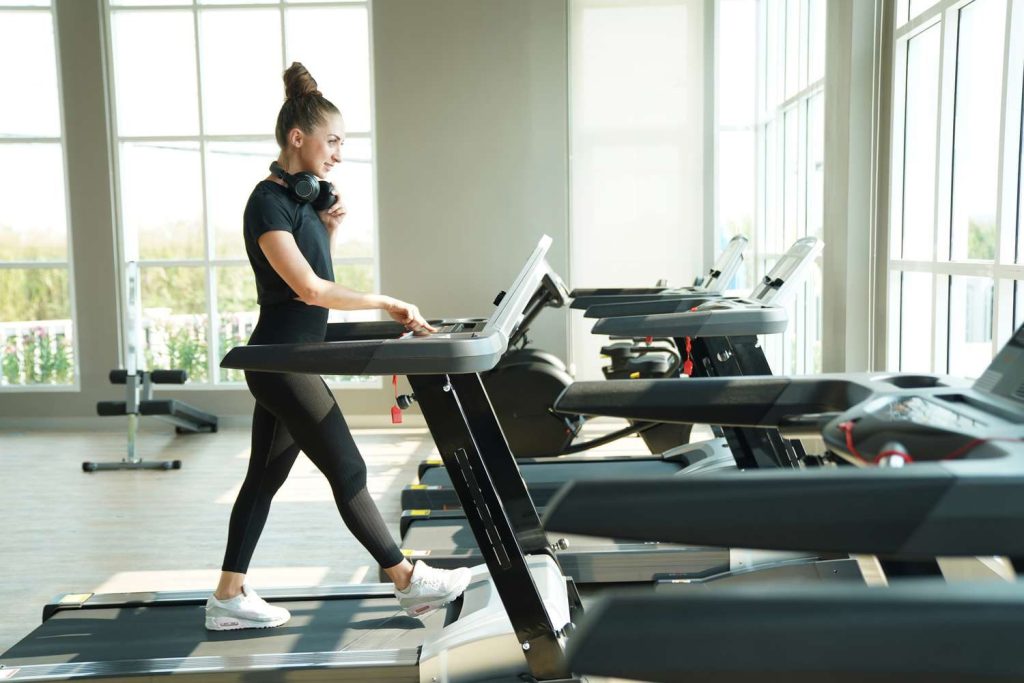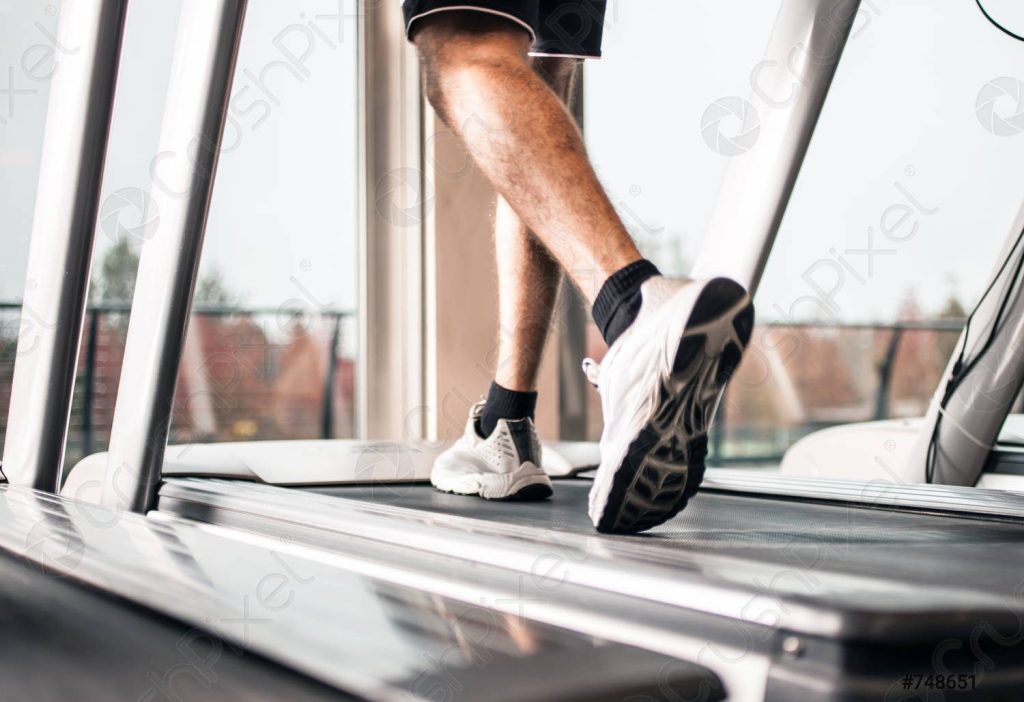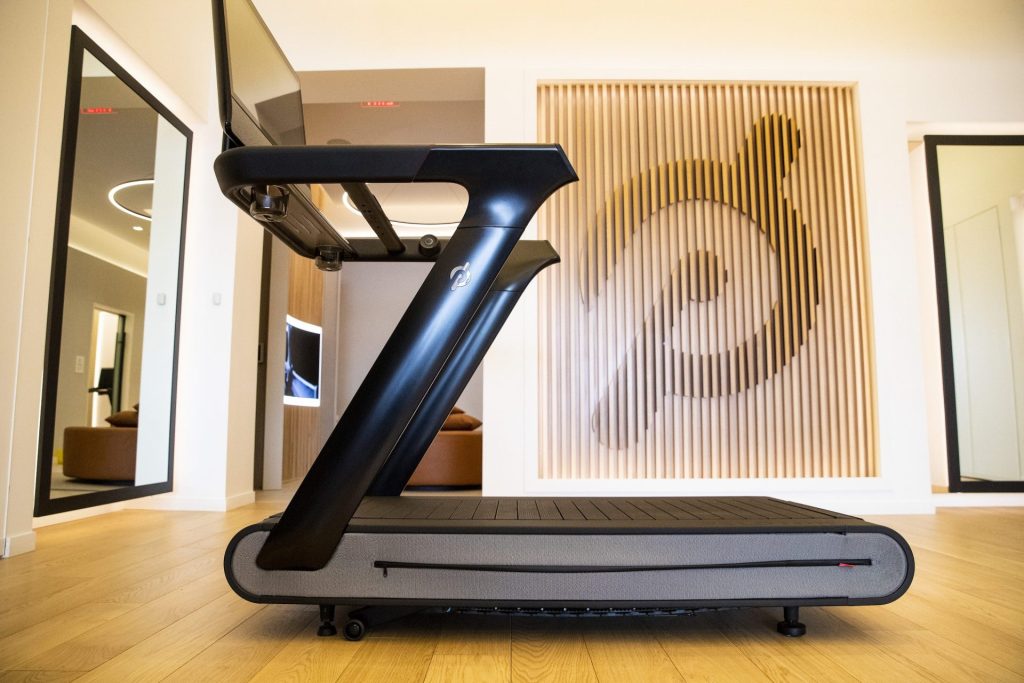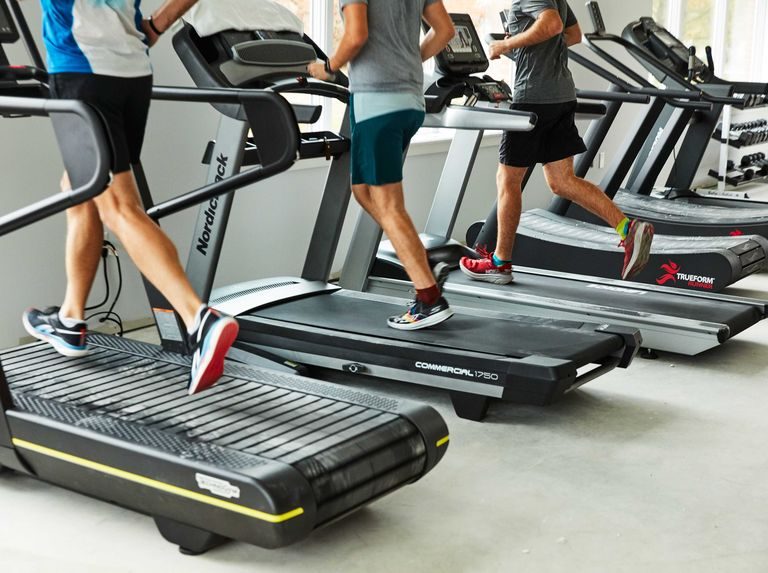things you should know about treadmill
Unlock the ultimate guide on things you should know about treadmill usage. From health benefits to potential risks, and from cost considerations to pro tips, we cover every aspect to optimize your workout experience.

Are you contemplating adding a treadmill to your home gym, or maybe you’re considering integrating treadmill workouts into your fitness routine? There are both myths and facts circulating about treadmills, so we’ve decided to set the record straight. In this comprehensive guide, we will delve into 40 different aspects you need to know. Buckle up; it’s going to be an informative ride!
TABLE OF CONTENT
Is running on a treadmill bad for your joints?
There’s a common misconception that running on a treadmill is bad for your joints. The truth? It’s a mixed bag. Treadmills often have a softer surface compared to asphalt or concrete, providing some level of cushioning that may reduce joint stress. However, the repetitive nature of running in place can still put strain on your knees, hips, and ankles. Proper footwear, posture, and not overdoing your workout can help alleviate some of these issues. Consulting a healthcare provider for a tailored advice is always a wise idea.

Can treadmills cause repetitive stress injuries?
Let’s face it; repetitive stress injuries (RSIs) are a risk in any repetitive activity, not just treadmill running. The confined space of the treadmill belt limits your natural stride, potentially leading to RSIs over time. The key is variation. Mixing up your workouts with different speeds, inclines, or even stepping off for some strength training can minimize the risk. Listen to your body; if something hurts, it’s time to hit the pause button.
Is running on a treadmill boring?
Ah, the infamous “treadmill boredom.” Yes, running in place and staring at a wall can be monotonous. But boredom is in the eye of the beholder. Spice up your routine with high-intensity intervals, watch a thrilling series, or dive into a good playlist. Some modern treadmills even come equipped with interactive training programs. If you find yourself dreading the treadmill, maybe it’s time to shake things up a bit.
Can treadmills be dangerous if not used properly?
Oh, you bet they can! From flying off the back to slipping on a poorly maintained belt, treadmills can pose a range of risks if you’re not cautious. Always start your workout with a warm-up and attach the safety clip to your clothing. This clip will stop the treadmill if you fall. Never, and I mean never, step onto a moving treadmill belt. These basic guidelines can go a long way in ensuring a safe and injury-free workout.
Are treadmills expensive?
Let’s be honest, treadmills can put a dent in your wallet. Prices range widely, from a few hundred dollars for basic models to thousands for commercial-grade treadmills. The features, durability, and brand all factor into the price. However, consider it as a long-term investment in your health. Sometimes, you get what you pay for, so skimping might mean compromising on quality or features.

Do treadmills take up a lot of space?
Well, if you’re living in a cramped apartment, you’ll need to think twice before getting a treadmill. Standard home treadmills can take up a fair amount of room, typically requiring a footprint of about 77 inches long and 35 inches wide, not including additional space for movement and safety. Folding treadmills can save some space, but you’ll still need ample room to use them effectively.
Can treadmills be noisy?
If you’ve ever been in a gym, you know treadmills aren’t the quietest machines around. The motor, your footsteps—it all adds up. If you’re worried about noise, look for treadmills with a quieter motor or noise-reducing features. But keep in mind, complete silence is not an option unless you opt for a manual treadmill, which comes with its own set of pros and cons.
Is it difficult to maintain a treadmill?
Well, it’s not a set-it-and-forget-it deal, that’s for sure. Regular cleaning is essential to keep dust and dirt from affecting the belt and motor. You’ll also need to lubricate the belt periodically to ensure smooth operation. Some treadmills even require occasional belt tightening. While maintenance is manageable, neglecting it can lead to expensive repairs or a shorter lifespan for your treadmill.
Can treadmills be difficult to use?
Honestly, it depends. Basic treadmills with simple speed and incline options are generally user-friendly. However, those with advanced features, preset programs, and interactive training might take some time to get used to. As with any tech, there’s a learning curve, but once you’re over the hump, it’s smooth sailing—or running, in this case.

Are treadmills good for all fitness levels?
Yes and no. Treadmills are incredibly versatile, allowing for a range of speeds and inclines to suit both beginners and seasoned athletes. However, those with certain medical conditions or mobility issues may find treadmills less accommodating. Before beginning a new workout program, always get medical advice.
Can treadmills be used for all types of workouts?
Mostly yes. From walking and jogging to sprinting and interval training, the treadmill can be your best friend. That said, it’s not ideal for all workout types. For example, lateral movements and certain types of functional training aren’t suited for a treadmill.
Are treadmills accurate in tracking your progress?
Take it with a grain of salt. While most modern treadmills offer tracking features like distance, speed, and calories burned, they may not be 100% accurate. External fitness trackers or a good old-fashioned notebook can provide a more comprehensive view of your progress.
Can treadmills be used to simulate running outdoors?
Almost, but not quite. Many treadmills offer incline options to mimic the resistance of outdoor running, and some even have pre-programmed “terrain” workouts. However, they can’t fully replicate the unpredictability of outdoor surfaces, weather conditions, and changes in direction.

Can treadmills help you to lose weight?
Absolutely, if used correctly! Consistent treadmill workouts, combined with a balanced diet, can contribute to weight loss. The key is to mix up your workouts to include both cardio and strength elements, making sure you’re burning more calories than you consume.
Can treadmills help you to build muscle?
Well, sort of. While treadmills are primarily designed for cardiovascular exercise, running on an incline or incorporating sprints can engage different muscle groups and contribute to muscle tone. For substantial muscle building, you’ll need to complement treadmill workouts with strength training.
Can treadmills improve your cardiovascular health?
You bet! One of the primary benefits of using a treadmill is enhancing your cardiovascular health. Regular aerobic exercise, like running or walking on a treadmill, can help lower blood pressure, improve heart health, and boost the efficiency of your cardiovascular system. But, as always, consult your healthcare provider for a tailored fitness plan.
Can treadmills reduce your risk of chronic diseases?
Indeed, they can. Regular exercise on a treadmill can contribute to reducing your risk of chronic diseases like diabetes, heart disease, and even some forms of cancer. However, treadmills aren’t miracle cures; maintaining a balanced diet and healthy lifestyle is equally important.

Are there any alternatives to using a treadmill?
Sure thing! Elliptical machines, stationary bikes, and rowers are excellent alternatives that offer different types of cardiovascular workouts. Outdoor running and group fitness classes are also good options if you want to shake things up a bit.
What are some tips for using a treadmill safely and effectively?
Safety first, folks! Always use the safety clip, start with a warm-up, and gradually increase your speed and incline. Pay attention to your form, keep your hands off the side rails, and avoid looking down as it may affect your posture. And remember, hydration is key!
Is running on a treadmill different from running outdoors?
Definitely. Though treadmills mimic the running experience, they lack the natural terrain and environmental factors of outdoor running. Additionally, the moving belt assists leg turnover, making it somewhat easier than road running. Many athletes suggest setting the incline to 1-2% to offset this difference.
Can running on a treadmill cause muscle imbalance?
Yes, it’s possible. Since treadmills offer a uniform surface and repetitive motion, you could develop muscle imbalances over time. To counter this, mix up your treadmill routine with outdoor runs, strength training, or other forms of cardio to engage various muscle groups.

Can running on a treadmill affect your running gait?
Indeed, it can. The smooth, flat surface of a treadmill might encourage a different gait than natural terrains do. It’s a good idea to be mindful of your form and consider getting professional gait analysis for a more comprehensive understanding.
Can running on a treadmill lead to overuse injuries?
Unfortunately, yes. The repetitive nature of treadmill running can contribute to overuse injuries like shin splints or stress fractures. That’s why it’s crucial to incorporate rest days, cross-training, and stretching into your fitness routine.
Is running on a treadmill as effective as running outdoors for weight loss?
Ah, the age-old debate! Both have their merits. Treadmills allow for controlled, consistent workouts, which can be excellent for targeted weight loss strategies. Outdoor running, with its varied terrains and resistance factors, can also be effective. The key is consistency and, of course, diet.
Is running on a treadmill as effective as running outdoors for building muscle?
Well, not entirely. While running on an incline can help tone muscles, treadmills generally focus on cardio. Outdoor running, particularly on hilly terrains or varied surfaces, can engage different muscle groups more effectively.

Is running on a treadmill as effective as running outdoors for improving cardiovascular health?
Generally speaking, yes. Whether indoors or outdoors, running is a stellar way to improve cardiovascular health. However, the varied terrains and wind resistance outdoors can offer a more challenging workout. But, for controlled environments and specific training, treadmills hold their own.
Is running on a treadmill as effective as running outdoors for reducing the risk of chronic diseases?
In essence, yes. The goal is regular exercise, and both platforms can achieve this. Whether it’s reducing the risk of heart disease or combating obesity, the consistency of your workouts is the game-changer, not so much the venue.
What is the best treadmill for me?
Ah, the million-dollar question! The best treadmill for you depends on various factors like your fitness goals, available space, and budget. From basic models for walking to high-end machines with all the bells and whistles, there’s something for everyone. Take time to research, read reviews, and maybe even try out a few in stores or gyms.
What are some common treadmill mistakes to avoid?
Listen up, folks! Overstriding, holding onto the handrails, and using improper footwear are all common no-nos. Furthermore, never consider getting on or off a moving treadmill. Safety and correct form should always be your top priorities.

How can I get the most out of my treadmill workouts?
Variety is the spice of life—and workouts! To maximize benefits, incorporate intervals, inclines, and different speeds. Also, set achievable goals and track your progress to stay motivated.
Does running on a treadmill affect your posture?
It can, especially if you’re not mindful. Running on a treadmill can sometimes lead to slouching or leaning too far forward, which isn’t ideal for your posture. Keep your back straight, your shoulders relaxed, and your gaze forward to maintain good posture.
How does treadmill running impact mental health?
Believe it or not, it can be a real mood booster! Physical exercise releases endorphins, the body’s natural stress-relievers. However, the “treadmill blues,” a feeling of monotony, can affect some folks. The key is to mix it up: Listen to music, watch TV, or change your workout routine to keep things interesting.
Are treadmills energy-efficient?
Eh, not really. Treadmills do consume electricity, and more advanced models with extra features like built-in TVs can be particularly energy-hungry. If you’re eco-conscious, look for energy-efficient models or simply unplug the machine when it’s not in use.

How does the quality of a treadmill affect its performance?
Quite a bit, actually! Higher-quality treadmills offer smoother rides, better shock absorption, and more reliable tracking features. While they can be pricier, the investment often pays off in terms of durability and overall user experience.
Is there a learning curve associated with using treadmills?
A little bit, but nothing to fret over. Most treadmills are user-friendly, but it can take a session or two to get comfortable with the controls and features. Always start slow and consult the user manual or a fitness trainer for best practices.
What are the social aspects of treadmill running?
While treadmill running is generally a solo activity, many gyms arrange treadmills in such a way that you can run “alongside” others. Some modern treadmills even offer virtual running communities where you can compete or collaborate online. It’s not the same as a group run outdoors, but it’s something!
Can you multitask while using a treadmill?
You can, but should you? Some people read or watch TV while on the treadmill. However, this can distract from your workout and even throw off your form. If you must multitask, choose activities that don’t compromise your safety or performance.

Are there age limitations for treadmill use?
Generally, treadmills are suitable for most age groups, but extra caution should be taken for children and seniors. Many treadmills have safety features, but nothing replaces supervision and common sense. Always consult a healthcare provider for age-specific recommendations.
What are the warranty and customer service considerations when purchasing a treadmill?
Warranties can vary wildly, so read the fine print! Basic models might offer 1-2 years of coverage, while higher-end models can go up to 5 years or more. Also, consider the brand’s reputation for customer service. You’ll want a responsive team if you run into any snags.
How frequently do treadmills require professional maintenance?
With regular use, a yearly maintenance check is advisable. However, higher-quality treadmills may require less frequent servicing. Always check the user manual for maintenance recommendations specific to your model.
Is it worth buying a used treadmill?
If you’re on a tight budget, a used treadmill might seem like a good deal. However, tread lightly! Make sure to check its condition, ask about its history, and see if any warranties are still active. Buying used can be a hit or miss, so do your homework.

What are the latest treadmill technologies?
From virtual reality workouts to AI-powered training programs, treadmill tech is ever-evolving. These advancements can make your workouts more engaging and personalized but often come at a steeper price.
Are treadmills suitable for pets?
Surprisingly, yes! There are treadmills designed specifically for dogs, which can be a great solution for exercise on rainy days or for high-energy pups. However, pet treadmills should not be a substitute for outdoor walks and activities.
Can you DIY treadmill repairs?
While some minor issues like belt adjustments can be done at home, major repairs should be left to the professionals. Tinkering with the machine yourself can void the warranty and even cause additional damage. When in doubt, call in the experts.
What are some fun treadmill workouts?
If the thought of another 30-minute jog makes you yawn, shake things up! Try interval training, virtual runs, or even treadmill dance workouts to break the monotony. Exercise should be fun, not a chore!

CONCLUSION
We’ve pounded the pavement—or rather, the treadmill belt—discussing an exhaustive list of topics that cover every inch of the treadmill landscape. From pondering if treadmills are bad for your joints, to diving into the nitty-gritty of warranties and maintenance, we’ve left no question unanswered. We even considered the social aspects, energy efficiency, and the potential for your fur baby to join in on the treadmill fun!
Whether you’re a fitness novice pondering the potential boredom factor or an experienced athlete curious about the effects on muscle imbalances, this guide aimed to bring you clear, nuanced, and helpful answers. We explored the benefits, such as improved cardiovascular health and weight loss, while also cautioning against pitfalls like repetitive stress injuries and overuse.
We also sprinkled in some pro tips, discussed the need for professional maintenance, and even gave a nod to the latest treadmill tech. From budget concerns to the intricacies of achieving a well-rounded workout, this guide should serve as your comprehensive manual for making the most of your treadmill experience.
If you’re in the market for a treadmill, remember that the best choice is one that fits your unique needs, from space considerations to the level of noise you’re willing to tolerate. Always bear in mind the importance of proper form and, above all, the value of a safe and effective workout.
In essence, the treadmill can be your best friend or worst enemy in your fitness journey; it all depends on how you use it. Armed with the insights from this comprehensive guide, you’re now well-equipped to make that relationship a beneficial and lasting one.
